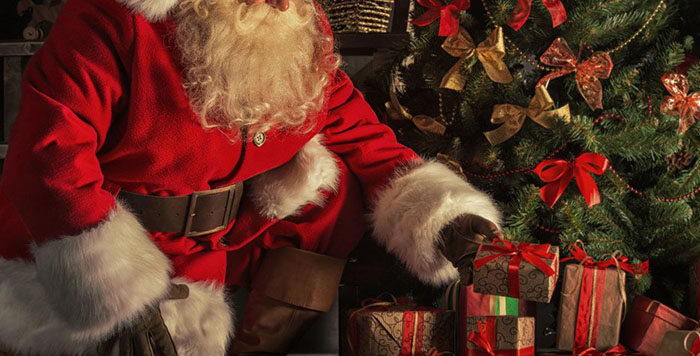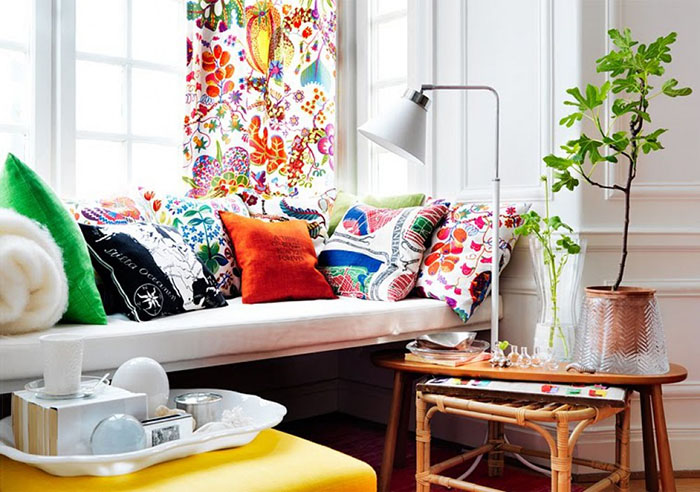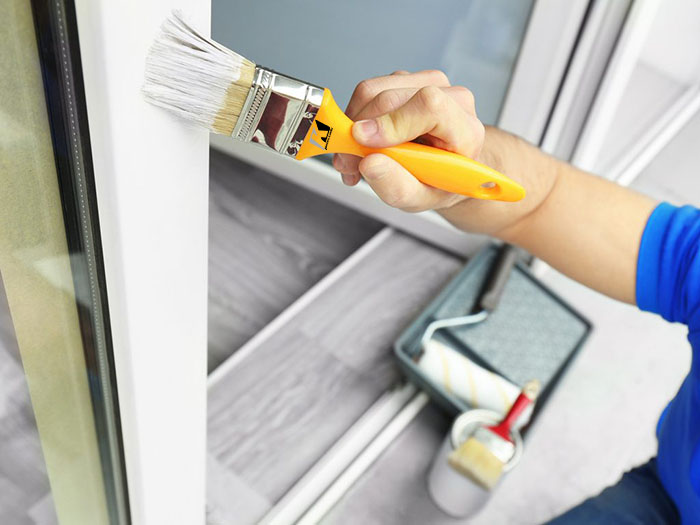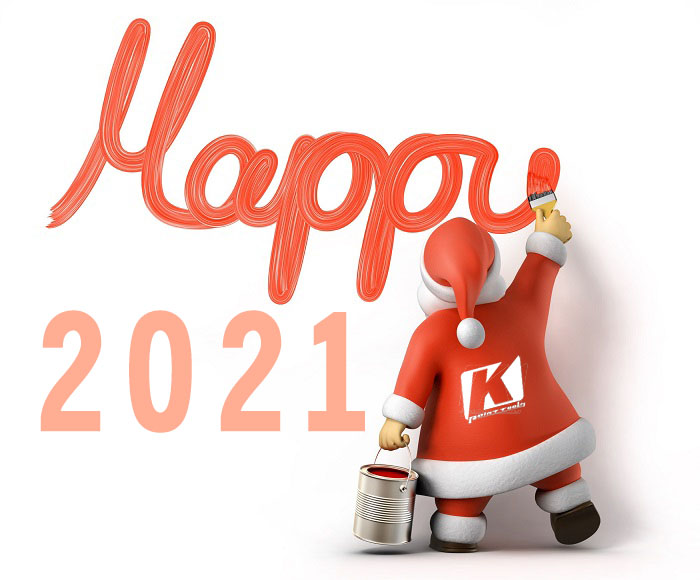Roman Saturnalia
Saturnalia was an ancient Roman festival in honor of the deity Saturn, held on December 17 of the Julian calendar and later expanded with festivities through December 23. The holiday was celebrated with a sacrifice at the Temple of Saturn, in the Roman Forum, and a public banquet, followed by private gift-giving, continual partying, and a carnival atmosphere that overturned Roman social norms: gambling was permitted, and masters provided table service for their slaves. The poet Catullus called it "the best of days."

Feast of the Nativity: Christmas
An Advent wreath and Christmas pyramid adorn a dining table. The earliest source stating December 25 as the date of birth of Jesus was Hippolytus of Rome (170–236), written very early in the 3rd century, based on the assumption that the conception of Jesus took place at the Spring equinox which he placed on March 25, to which he then added nine months.
There is historical evidence that by the middle of the 4th century, the Christian churches of the East celebrated the birth and Baptism of Jesus on the same day, on January 8, while those in the West celebrated a Nativity feast on December 25 (perhaps influenced by the Winter solstice); and that by the last quarter of the 4th century, the calendars of both churches included both feasts.
The earliest suggestions of a feast of the Baptism of Jesus on January 6 during the 2nd century comes from Clement of Alexandria, but there is no further mention of such a feast until 361, when Emperor Julian attended a feast on January 6 that year.
In the Christian tradition, the Christmas season is a period beginning on Christmas Day (December 25). In some churches (e.g., the Lutheran Churches and the Anglican Communion), the season continues through Twelfth Night, the day before the Epiphany, which is celebrated either on January 6 or on the Sunday between January 2 and 8.
In other churches (e.g., the Roman Catholic Church), it continues until the feast of the Baptism of the Lord, which falls on the Sunday following the Epiphany, or on the Monday following the Epiphany if the Epiphany is moved to January 7 or 8. If the Epiphany is kept on January 6, the Church of England's use of the term Christmas season corresponds to the Twelve Days of Christmas, and ends on Twelfth Night.
This short Christmas season is preceded by Advent, which begins on the fourth Sunday before Christmas Day, coinciding with the majority of the commercialized Christmas and holiday season. The Anglican Communion follows the Christmas season with an Epiphany season lasting until Candlemas (February 2), which is traditionally the 40th day of the Christmas–Epiphany season; meanwhile, in the Lutheran Churches and the Methodist Churches, Epiphany-tide lasts until the first day of Lent, Ash Wednesday.

Manufacturing Christmas
Three staples of Christmas in America — the Christmas Card, Christmas Tree lighting and even Christmas Trees themselves — have their own histories of engineering, manufacturing and innovation.
In and around 1860, Christmas cards were popular in the UK, but hadn't caught on here. While examples existed previously in the U.S., it wasn't until 1875 that they were a success, thanks to Louis Prang. Prang was, among other things, a writer on many subjects (it is said that he is remembered for the Prang Method of Art Instruction, Prang Standards of Color, and Prang's Aids for Objective Teaching).
He's also considered to be the Father of the American Christmas Card, as he perfected chromolithography, which used 36 lithographic plates to reproduce up to 32 colors in a single picture. This led to the ability to reproduce the richness of oil paintings on greeting cards and art prints. He also came up with the idea to have competitions for Christmas card designs (June, 1880).
Christmas cards weren't always a throw-away. According to a reference in the December 31, 1881, Harper's Bazaar magazine, "The American Christmas cards excel the imported cards this season, and many of them are framed and presented as separate gifts, instead of merely accompany a present."
So, while the cards themselves weren't engineered, the unique equipment that manufactures them is certainly engineered.
Apparently, Christmas lights came into play at about the same time as cards were popularized here in the U.S. Edward Johnson, as associate of Thomas Edison, electrically lit a Christmas tree for the first time in 1882. In 1895, the first electrically lighted Christmas tree was displayed in the White House. The year 1900 brought the earliest known advertisement for Christmas tree lamps, placed by General Electric in the November 18 edition of Scientific American magazine.
The ad mentioned that the bulbs could be either purchased or rented. The first commercially available lighting sets (hand-wired by the customer) were offered in 1901, but these were intended mainly for use in storefront windows. In the 1904-1905 timeframe, GE offered the first pre-wired lights for Christmas trees. According to the Timeline article referenced below, "The outfits included miniature base GE/Edison carbon filament lamps, with prominent exhaust tips at the top of the glass envelopes. It is probable that the socket string (or festoon) was manufactured by The American Ever Ready Company."
Most bulbs used through 1916 incorporated a carbon element; at about this time, GE brought evenly burning, longer-lasting tungsten-filament lamps into production. By 1920, GE offered for the first time a flame-shaped lamp with a tungsten filament — soon to become an industry standard and manufactured through the 1970s.
The "infant" Underwriters Laboratories first tested the then-established standards for American Christmas tree lighting strings. The UL safety designation quickly became an effective sales tool. In the 1920s, Japanese and highly detailed Austrian and German designs entered the market. The Japanese sets were machine made and thus, cheaper, so this type dominated the market for a few years.
Lester Haft of the C.D. Wood Electric Company changed the way the world used Christmas tree lights in 1921, applying for a patent "…describing the use of existing styles of screw-in and bladed add-on connectors and their incorporation into a standard series-wired lighting string of eight sockets. The patent application was carefully worded so as to include almost all possible ways of wiring the sets using the connectors. The key to the filing was that for the first time, easy to use connectors would be incorporated into Christmas lighting strings."
Things got really interesting in 1959 when the Aluminum Specialty company introduced the first aluminum Christmas tree to a "somewhat confused" public. As conductive aluminum trees and strings of electrical lights don't mix well, other ways were found to light the wildly popular trees. For example, base lighting with rotating color wheels kept the juice away from the dangerous part of the "tree." The sales of string lighting took a nosedive, punching the tree lighting industry dead in the face while they were also struggling with, interestingly, offshore competition. By 1970, nearly all Christmas tree lights were foreign-made.
Fast-forward to the present: Artificial trees are popular, but they're no longer of the type that leave "half of the manufacturing" process to the customer. In a tree design by Holiday Tree Trim Co., for example, manufactured branches are permanently strapped to the pole (trunk) for easy setup and storage, and, of course, the tree comes in sections.
The company, which has been manufacturing Christmas trees for 40 years, makes a point of touting the fact that they're Made in America, "not in an overseas factory." Artificial Christmas trees are so official in the U.S. that they're included in Standard Industrial Classification (SIC) 3999. Also included here are "Christmas tree ornaments, except electrical and glass." The category also includes such articles as beach umbrellas, flyswatters, lamp shades, tear gas devices and equipment and, thankfully, "wreaths, artificial."
As I check my watch, it occurs to me that perhaps I should get going with the Christmas card thing. I should also stop and get a tree. A real one, though small. And some reasonable decorations that don't require a home electrical service expansion.

A house is made with walls and beams. A home is built with love and dreams. So, what is a vibrant domestic made with? Maybe, you can get the reply from magazines, web sites or even from your friends’ homes. There is a lot of sources to supply you with statistics about how can you hold your domestic colorful. In that spirit, right here are some guidelines to facilitate your choice when making your domestic colorful.
Looking to spruce up your home in time for Christmas 2021? Then look no further at a festive facelift for your home with the help of the finest residential painters in Sydney. With professional tips to help you decide what is the best brush or other paint tools to use for which job, you’ll be rocking around the Christmas tree with your beautiful new shiny home!
Get Inspired and Get Christmas Planning
You may additionally be stimulated via websites and magazines providing cutting-edge indoors graph tendencies and decide to paint your home through yourself. Color consultants can additionally be a source of your idea and motivation to undertake DIY residential painting. In addition, you may additionally think about talking to an expert house painter in your vicinity for expert pointers & suggestions.
When planning to paint your home, there’s a lot to consider. Deciding on paint kinds and finishes, selecting brushes and rollers, and figuring out any areas that you don’t desire to paint.
This capacity you need to consider:
Planning what you have to purchase
Planning what you need to do earlier than painting
Planning what you need to do whilst painting
Planning what you need to do after painting
Christmas purchases planning:
If you are not already committed to a color, you can check exceptional paints by way of portray a piece of foam board to see how light influences the color. Before shopping for the paint that you need to understand the square photos of the room you intend to paint. Generally, one gallon is considered adequate for every 450 square feet.
Before applying color on your walls, you need to recognize whether the current shade is water-based or oil-based. Take a white cloth and alcohol then rub it on the wall. If the paint starts to switch on the cloth, it is water-based. It is higher to use eco-friendly paints for DIY residential painting as they have little to no risky organic chemical compounds (VOC).
Paint Tools:
For water-based paint use a brush with nylon or polyester-bristles
Use natural bristles for oil-based paint;
For painting or window casings, foam brushes are good;
Use flagged brushes for smooth and precise layers of paint;
Use larger naps for heavy texture to reduce the number of coats needed and the amount of time spent.
Before Painting:
Clean the walls with soap and water and rinse with water, as paint doesn’t stick very well to dirty walls;
Clean the ceilings before painting as well;
Cover the floor with cloths or old sheets to protect from splatters and drips; don’t use plastics, as they are slippery underfoot;
You can mix all of your color cans together to ensure color consistency throughout the room;
Fill holes with spackle.
While Painting:
Don’t spend all your time taping everything. Buy a quality edger instead of painter’s tape;
Use an angled-sash brush. Hold it like a pencil and paint the corners;
Use a hammer and nail to punch holes in the paint can every inch or so, so that paint around the rim can drip back inside the can.
After Painting:
When the paint is water-based, use soap and water to clean your brushes immediately after painting is complete;
When the paint is oil-based, use a solvent such as paint thinner or mineral spirits to clean your brushes;
Hang moist paint brushes upside down. wrapping them by plastic or waxed paper;
Roll the paint brushes as close to the cut-in areas as possible to prevent hat-banding.
Get The Perfect Residential Touch-up with The Right Paint Brush Christmas 2021
Painting doesn’t want to be an ache when deciding on the equipment and objects you will want to end the job like a pro. You don’t have to spend an absolute fortune on the quality package in the keep either, with a few little recommendations on how to figure out the first-rate brushes to use, you’ll be portrayed in style, and revel in an end that you’d frequently pay an expert to do.
Paintbrushes come in a range of sizes, types, bristle substances and tip types. Better pleasant brushes can frequently suggest you will cease up with a higher and cleaner seem to be than a less expensive brush. Finding the proper stability will be up to your price range at the give up of the day, however as lengthy as you continue to be alongside the strains with these tremendous tips, you will be playing some of the most effortless, smudge much less portray in your life!
Types of brush bristles that you must concentrate on earlier than painting:
Natural bristles - generally made with animal hair and provide blessings in making use of oil-based paints. These brushes have break up ends that permit the brushes to preserve greater paint and provide a better, even texture when the usage of oil-based paints. They are frequently extra high priced to purchase, however provide supreme floor insurance with a lack of striping alongside the brush stroke.

Nylon Brushes:
These brushes are much cheaper to purchase than natural hair brushes and offer advantages in the application of latex-based paints. Nylon is more durable than natural fibre, and so will last much longer.
Polyester Brushes:
These brush bristles are some of the cheapest brushes available, hold a decent amount of latex paint and hold their shape better due to the fibre being stronger.
The final part of choosing the right brush is to select the tip style of the bristles. These come in a variety of styles such as squarely cut bristles for applying paint over large areas or used in thicker trim situations, as well as the thin angle sash brush which is perfectly adapted for filling in edges and corners. Along with knowing the advanced tips of painting your house like a pro, you also need to be smart enough choosing different painting tools and brushes. Whatever brush you choose for your painting work, ensure that the brush is suited to the type of paint you are using.
G.SB Paint Tools Co., Ltd. is a professional manufacturer of decorative paint tools, having almost 20 years experience in researching and developing different decorative paint tools. Our team provide professional paint tools, organized approach to delivering professionalism to any project large or small.
We bring years of experience and industry knowledge to every job we complete, so you can be sure you'll end up with a quality finish completed on time and on budget. We also have a detailed understanding and experience in dealing with our clients to enable jobs to run smoothly with great attention to detail and minimal disruption to our clients. A lot of our business comes from referred customers with whom we work hard to maintain a strong business relationship.
G.SB ambition is to provide our customers with the widest range of DIY paint tools or professional paint tools products in accordance with our best prices policy, backed with the best service. Our team members are the heart and soul of our business. Our team's guiding principles are integrity, respect, teamwork, achievement and innovation.
Our guiding principles are the keys to our culture and to achieving our vision. We pursue sustainability within our operations by striving to make them socially responsible and environmentally aware and economically viable.
We seek to lessen our environmental impact in ways that are measurable including: achieving better and more efficient use of resources; ensuring our suppliers operate sustainably and ethically; encouraging and educating customers about environmentally friendly alternatives; and focusing on the “reduce, re-use and recycle” waste management principles.
We value our team members’ contributions, recognize and reward their efforts and provide a fun, satisfying and safe workplace. By living our values and operating sustainably, we will continue to “build the best” and earn the right to serve our customers tomorrow and into the future.
Our team members are the face of G.SB and provide friendly and helpful service. Whilst we're larger today, we have kept a family feel and still have fun. We have a high retention rate with many long-term team members, we regularly ask our team for feedback on how we're doing and how we're living our vision and values. We truly care for our team, and take our responsibility to provide a safe, secure and rewarding environment very seriously.

Make a paint brush Christmas decoration
2021 Christmas season, forget buying new decorations – it’s time to make your own. DIY paint brush Christmas decoration is the perfect Christmas craft project for the kids, allowing them to express their creative side while also producing unique ornaments for your home.
With this project, paint brushes are transformed into characters like the Grinch, or traditional festive figures, such as Santa and a snowman. But the brilliance is they can be transformed into whatever you like! Whether your kids love Confucius and Ultraman, dinosaurs or dogs, they can create their very own paint brush characters to decorate the home.
Previous: Exploring the Rise of Fume Vapes: A Comprehensive Guide
Copyright:@2020-2021
Comments Please sign in or sign up to post.
0
0 of 500 characters used